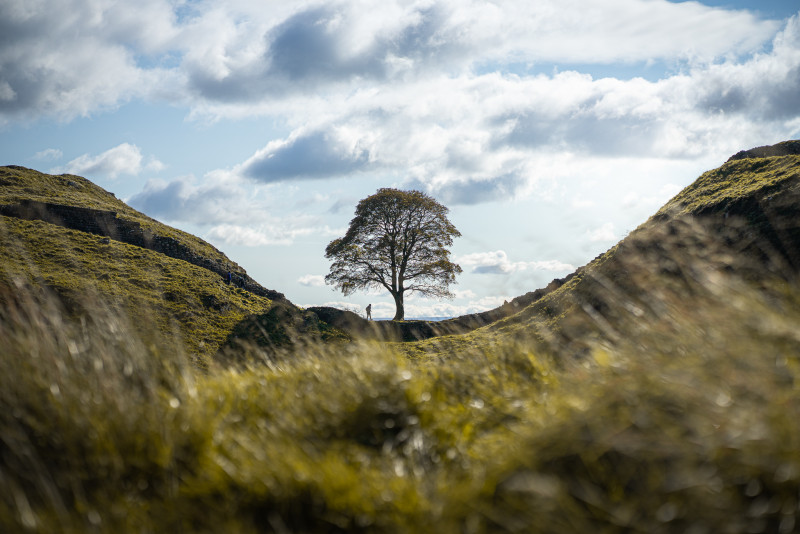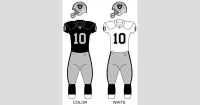1978
The Toyota Supra (Japanese: トヨタ・スープラ, Hepburn: Toyota Sūpura) is a sports car and grand tourer manufactured and developed by the Toyota Motor Corporation beginning in 1978. The name "supra" is a definition from the Latin prefix, meaning "above", "to surpass" or "go beyond".
1978
The first generation of the Supra was based largely upon the Toyota Celica liftback, but was longer by 129.5 mm (5.10 in). The doors and rear section were shared with the Celica but the front panels were elongated to accommodate the Inline-6 instead of the Celica's 4-cylinder engine. Toyota created the Celica Supra after receiving requests from North American dealerships to offer a competitor to the very popular Datsun 280Z. The Celica XX (in Japanese) served as the basis of the Toyota CAL-1 which was introduced at the 1977 Tokyo Motor Show and the Celica XX was introduced later in 1978. The Celica XX followed a new product offering Toyota had introduced, offering personal luxury cars at their existing dealerships. The Celica XX was the top-level product alongside the Celica at Japanese dealership sales channels called Toyota Corolla Store. The Celica XX offered the same comforts of the Chaser hardtop coupe, Mark II hardtop coupe, and the Crown hardtop coupe.
January 1979
The Supra was first exported outside Japan in January 1979. The federalized model was originally equipped with a 110 hp (82 kW; 112 PS) 2.6-litre 12-valve SOHC inline-6 engine.
1980
Also in 1980 (for the 1981 model year), a new Sports Performance Package became an option, which included sport suspension, raised white letter tyres, and front and rear spoilers. This also marked the last year that an 8-track tape player was offered in any Supra.
August 1980
In August 1980 (for the 1981 model year), the Supra received an upgrade in displacement with the 2.8-litre 5M-E engine shared with the Crown (S110). It was still a 12-valve SOHC engine, but had a power output of 116 hp (87 kW; 118 PS) and 145 lb⋅ft (197 N⋅m) of torque. The car's automatic transmission was changed to the revised Toyota A43D and it gained a revised final drive gearing. Because of the change in engine and transmission a new chassis code of MA47 was given to the 1981 model. Performance figures for this model include a 0–60 mph (97 km/h) acceleration time of 10.24 seconds and a 1/4-mile time of 17.5 seconds at a speed of 77.7 mph (125 km/h).
1981
In 1981, for the 1982 model year, in the North American market, the Celica Supra's engine was the 2.8-litre 12-valve (two valves per cylinder) DOHC 5M-GE. Power output was 145 hp (108 kW; 147 PS) SAE net and 155 lb⋅ft (210 N⋅m) of torque. The engine used an 8.8:1 compression ratio to achieve the power and featured a vacuum advanced distributor. When the car debuted, it had a drag coefficient of Cd=0.348, a 0–60 mph (0–97 km/h) acceleration time of 9.8 seconds and a 1⁄4 mile (400 m) time of 17.2-seconds at 80 mph (129 km/h).
1982
In 1982, for the 1983 model year, there were not many changes but there was an increase in power output to 150 hp (112 kW; 152 PS) and 159 lb⋅ft (216 N⋅m) of torque from the same 5M-GE engine. The only real change in the engine area was the switch from a vacuum advanced to an electronic advanced distributor, yet that did not increase the power output. Toyota switched to a 4.10:1 rear gear ratio for the P-type and a 3.73:1 for the L-type. As for the optional automatic transmission, they replaced the A43DL 4-speed with a newly designed A43DE 4-speed. It had an electronic controller that would adjust its shift pattern for a balance between performance and economy. It was the first in the industry to provide an electronically controlled transmission (ECT). This allowed the driver to choose either the "power" driving mode or "normal" driving mode at the touch of the button. The power mode provided the quickest acceleration and the normal mode provided the best all-around performance.
August 1982
From August 1982 to 1983, the Celica XX, as it was named in Japan, had fender mirrors and came in four models depending on the engine:
1983
In 1983, for the 1984 model year, the changes were significant. Power output was increased on the 5-speed models to 160 hp (119 kW; 162 PS) and 163 lb⋅ft (221 N⋅m) of torque. The increase was achieved by a mixture of a redesigned intake manifold with D-shaped intake runners and an increase in compression ratio to: 9.2:1. Another notable change in the 5-speed models was the switch to a 4.30:1 gear ratio in the rear differential. All automatic models retained the previous years power statistics, but the rear gear ratio was changed to 4.10:1.
August 1983
From August 1983 to 1986, the Celica XX had door-mounted mirrors and the same four engines options but with performance improvements. The 5M-GEU engine compression ratio was increased to achieve 175 PS (129 kW; 173 hp) and 177 lb⋅ft (240 N⋅m) of torque and the M-TEU engine upgraded with an air-to-liquid intercooler to 160 PS (118 kW; 158 hp) and 23.5 kg⋅m (230 N⋅m; 170 lb⋅ft) of torque.
1985
The Supra was redesigned again in 1985. Power output was marginally increased to 161 hp (120 kW; 163 PS) and torque was up to 169 lb⋅ft (229 N⋅m). All models of this year had the same amount of power (both automatic models and 5-speed models). The engine received a redesigned throttle position sensor (TPS) as well as a new EGR system and knock sensor. With the slight increase in power the Supra was able to propel itself from 0–60 mph (97 km/h) in 8.4 seconds and netted a 16.1 second quarter-mile at 85 mph (137 km/h).
December 1985
While 1985 was to be the last year of production of the second generation model, delays in production of the third generation model led to a surplus of second generation models. During the first half of 1986 the 1985 P-type was still offered for sale, with only minor cosmetic changes as well as the addition of a now mandatory rear-mounted third brake light on the hatch. These were all labelled officially as 1986 models. The P-type were the only model available for the 1986 model year. Production for the A60 Supra ended in December 1985 in order to make way for the upcoming A70 Supra.
1986
The third-generation Supra represented an arsenal of new technology. In 1986, options available for the Supra included a 3-channel ABS and TEMS which gave the driver two settings which affected the damper rates; a third was automatically activated at wide open throttle, hard braking, and high speed maneuvering.
January 1986
The Supra traces much of its roots back to the 2000GT owing to an inline-6 layout. The first three generations were offered with a direct descendant to the Crown's and 2000GT's M engine. Interior aspects were also similar, as was the chassis code "A". Along with this name, Toyota also included its own logo for the Supra. It was derived from the original Celica logo, being blue instead of orange. This logo was used until January 1986, when the A70 Supra was introduced. The new logo was similar in size, with orange writing on a red background, but without the dragon design. That logo, in turn, was on Supras until 1991 when Toyota switched to its current oval company logo. The dragon logo was a Celica logo regardless of what colour it was. It appeared on the first two generations of the Supra because they were officially Toyota Celicas. The dragon logo was used for the Celica line until it was also discontinued.
February 1986
In February 1986, the bonds between the Celica and the Supra were cut; they were now two completely different models. The Celica changed to a front-wheel drive layout, using the Toyota "T" platform associated with the Corona, while the Supra kept its rear-wheel-drive layout. The engine was updated to a more powerful 2,954 cc (3.0 L) inline-six engine rated at 149 kW (200 hp; 203 PS). Although initially only available with naturally aspirated engines, a turbocharged version was added in the 1987 model year. The Supra continued its relationship with the Soarer.
February 1986
The third-generation Supra was introduced in February 1986 as a stand-alone model, officially being separate from the Celica. Whereas the Celica became a front-wheel-drive sport coupe, the Supra retained its image as a rear-wheel-drive sports/GT car. The new Supra would continue to move upscale and become a showcase for Toyota's technology. The Supra was powered by a 3.0-litre DOHC inline six-cylinder engine rated at 149 kW (200 hp; 203 PS). Notable features included an electronically controlled independent suspension (called the Toyota Electronic Modulated Suspension – TEMS), and some came with a removable Sport-Roof panel (Targa top).
1987
The A70 Supra Turbo was introduced in 1987. The intercooled, turbocharged version of the 3.0-litre inline 6-cylinder engine boosted power to 172 kW (231 hp; 234 PS) and 240 lb⋅ft (325 N⋅m) of torque. The engine, designated as 7M-GTE, was one of the first distributor-less mass production engines in the United States. This was accomplished with 3 coils being shared using the wasted spark system. The Turbo model also included an engine oil cooler and an integrated rear spoiler. The sports package, which was standard on the Turbo and optional on the base model, included a limited-slip differential (LSD), TEMS, and headlamp washers. A new 4-channel anti-lock braking system (ABS) was optional on both models. In 1987, a new beige/tan colour combination was implemented, and only 1,000 cars were produced with this scheme. Toyota installed its variable induction technology into the DOHC twin-turbocharged 1G-GTE engine called T-VIS and also included it into the 7M-GTE engine as well.
1987
The Group-A MA70 Supra had varying degrees of success in various fields such as Rally and 24HR, but is most known for its participation in the Japanese Touring Car Championship (JTCC). In the JTCC the Supra did not win as many races as intended, which is primarily judged on the fact it was underdeveloped and its placement in a higher tier division under regulations because of the 3.0-litre engine displacement, imposing the Toyota with the performance inhibition of running with a higher curb weight and less power compared to the rest of its class. Both the TOM'S and SARD teams fared well in results in the (JTCC) with the TOM'S team winning on its debut in 1987, before abruptly ending their (JTCC) career with the MA70 Group-A in 1989.
October 1988
The Turbo-A was Toyota's evolution model for the Group A touring car series that required a minimum homologation run of 500 units. The Turbo-A was manufactured for 2 months during the period of September and October 1988 and was available strictly in Japan. Thus the term 88 Spec A. Some notable differences between the standard MA70 Supra 3.0 GT and the Turbo-A model are both cosmetic and mechanical;
1989
For the 1991 model year, the wheel design was changed to 5-spoke wheels. Both models had 16x7-inch aluminium alloy wheels that were fitted with 225/50/16 tyres and full-sized spares on steel wheels. Body molding changed in colour to better match the exterior. The front "Supra" emblem was also changed to the current corporate oval Toyota symbol was used from this model year onwards. The speedometer was also revised, and included more lines that were removed in 1989, but still did not have as many (one line per mph) as 1986.5 to 1988 models. New interior colours, namely shadow gray and deep red, were introduced, which marked the end of medium gray, tan and burgundy. Blue interior became only available on white packages, and those with blue paint. Burgundy was replaced with white package-only deep red. Every other body colour received a shadow gray interior, with leather interiors retaining medium gray seats and interior inserts. Front speakers were changed from 3.5 inch to 6.5 inches and the speaker cover was also enlarged to accommodate them. Beginning in 1991, Toyota began to offer a factory spoiler-style panel sunroof. These sunroofs are now highly sought after and rare since they were introduced in the ending production years of the A70 Supra.
1989
The new engine used in the A70 Supra, the Toyota 7M-GE, was the flagship engine of Toyota's arsenal. Both versions of the engine contained 4 valves per cylinder and dual overhead cams. The turbocharged 7M-GTE engine was Toyota's first distributor-less engine offered in the US which used coil packs sitting on the cam covers and a cam position sensor driven by the exhaust camshaft. It was equipped with a CT26 turbocharger and was rated at 172 kW (231 hp; 234 PS) at 5,600 rpm while the naturally aspirated 7M-GE engine was rated at 149 kW (200 hp; 203 PS) at 6,000 rpm. Further refinement on the turbo model increased power to 173 kW (232 hp; 235 PS) at 5,600 rpm and 254 lb⋅ft (344 N⋅m) of torque at 3,200 rpm in 1989. This was mostly due to a redesign of the wastegate. All models used the same tyre size of 225/50R16 on 16x7 inch wheels. Spare tyres were full-sized but on steel wheels.
1989
Upon its initial Australian Touring Car Championship (ATCC) debut in 1989, the Group-A Supra failed to finish its first race. With DNF's becoming a regular upset owing to the lack of power and heavy weight of the Supra, it began to strike doubt in the car's capability of success in the (ATCC) which suffered increasingly due to constant rules and regulation changes issuing a red-faced outcome against its main rivals like the Ford Sierra Cosworth RS500, Nissan Skyline HR31 GTS-R and the BMW M3 (E30) which were lighter, more powerful and had more development behind them. Hopes would further diminish for Toyota in the top division by the introduction of the domineering Nissan Skyline GT-R (R32) in the (JTCC) in 1989 and the Australian Touring Car Championship (ATCC) in 1990. Australian racing team Fitzgerald Racing won the first edition of the March 1991 Bathurst 12 Hour. Toyota in 1991 would switch to racing the Corolla Levin instead in the lower tier divisions, while many privateer teams soldiered on with the Supra until the Group A racing's final demise in 1993.
February 1989
The production of the A80 began in February 1989 under various teams for design, product planning, and engineering led by Isao Tsuzuki. By the middle of 1990, a final A80 design concept from Toyota Technical Centre Aichi was approved and frozen for production in late 1990. The first test mules were hand-built in A70 bodies during late 1990, followed by the first A80 prototypes being hand-assembled in 1991.
Late 1989
Changes for the 1989 model year include modifications to the wastegate actuator, feed location and engine management increased power output by 1.5 kW (2 hp; 2 PS) on the turbo model. The engine mount and brace were also revised in late 1989. The changes made to the cross member and mounts made to accommodate the (1JZ engine) for Japanese models. The protective body molding was also changed by taking away the steel reinforcement. This made the molding lighter and prevented the rusting problem found on the previous year models. The "white package" was introduced as well, featuring white body molding and white "saw blade" wheels. Interior choices were limited to blue and burgundy only. Other than pure cosmetics changes, there was nothing different from other models. All models received rear 3-point seat belts to replace the previous years' two-point lap belts. New tail lights, front bumper with integrated lower grille (as opposed to the previous years' detachable grille), side mirrors, turn signals, upper grilles, foglights, steering wheel, door panels, climate control, window switches and bezels, and stereo are added. Addition of coat hooks on B-pillar and removal of rear seat pockets round out interior changes. Turbo models received three piece spoiler with an integrated LED brake light. 1989 also marked the end of headlight washers in the US and SuperMonitor; an advanced system offered by Toyota able to calculate miles able to be traveled on current tank, ability to check vehicle codes from inside the cabin, among other features.
1990
In addition to the introduction of the JZA70 in 1990, Toyota introduced a special version of the JZA70 with the 1JZ-GTE engine known as the 2.5 Twin Turbo R model (JZA70-R). It boasted additional upgrades, including lighter sway bars, a larger intercooler, Torsen differential, Interbred TEIN/Bilstein sports suspension, Shadow/Dark grey interior trim, MOMO steering wheel and gear knob and Recaro seats and door trim. The wheels were painted charcoal grey, and the front bumper lip featured channeled air ducts for the front brakes. The Twin Turbo R introduced a new and exclusive colour option in 1992 for the JZA70-R model known as Jade Mica Green. (Note: this colour was also available in Europe) The JZA70-R model is the lightest and fastest model of third generation of the Supra.
1991
ACIS (Acoustic Control Induction System), a method of controlling air compression pulses inside the intake piping to increase power, was also a part of the 7M-GE's technological arsenal. All models were fitted with double wishbone suspension front and rear. A targa top was offered in all model years along with a metal power sliding sunroof (added in 1991).
December 1992
Again using subframe, suspension, and drivetrain assemblies from the Z30 Soarer (Lexus SC300/400), pre-production of the test models started in December 1992 with 20 units made, and official mass production began in April 1993. The fourth-generation Supra again shared its platform with the upscale Soarer coupe, sold in the US as the Lexus SC. Although the two cars looked similar dimension-wise, the new Supra was more than 13 inches (340 mm) shorter than its luxurious cousin.
1993
This redesign saw Toyota placing great emphasis on a more serious high-performance car. The A80 featured two new engines: a naturally aspirated Toyota 2JZ-GE having a power output of 164 kW (220 hp; 223 PS) at 5,800 rpm and 210 lb⋅ft (285 N⋅m) at 4,800 rpm of torque and a twin turbocharged Toyota 2JZ-GTE having a power output of 206 kW (276 hp; 280 PS) and 318 lb⋅ft (431 N⋅m) of torque for the Japanese model. For the export model (American/European markets) Toyota upgraded the Supra turbo's engine (by installing smaller, steel wheeled turbochargers and bigger fuel injectors, etc.). This increased the power output to 239 kW (321 hp; 325 PS) at 5,600 rpm and 315 lb⋅ft (427 N⋅m) of torque at 4,000 rpm (243 kW (326 hp; 330 PS) and 325 lb⋅ft (441 N⋅m) for European markets) Upon its launch in 1993, it was the first Toyota-badged vehicle to include a passenger-side airbag as standard (US-market only).
1994
In 1994, Toyota Racing Development displayed a replica of the 1994 JGTC BLITZ Racing Team Supra GT500 race car, known as the TRD 3000GT. The differences with the standard Supra was mainly with the body kits, aiming for better aerodynamics. The new body kit made the car 60 mm wider at the front and 50 mm wider at the rear. This allowed wider wheels to be fitted, which in turn improved the car's lateral grip. The engine and suspension also got small modifications. Only 35 examples of these were ever produced, each of which came with its own specially numbered VIN plate that officially re-classified the car as a TRD 3000GT rather than a Supra.
1994
The standard A80 Supra chassis has also proven an effective platform for roadracing, with several top 20 and top 10 One Lap of America finishes in the SSGT1 class. In 1994, the A80 managed remarkable skidpad ratings of 0.95 lateral g's (200 ft) and 0.98 lateral g's (300 ft) The Supra also featured a four-sensor four-channel track tuned ABS system with yaw control whereby each caliper is sensored and the brakes are controlled individually according to the speed, angle, and pitch of the approaching corner. This unique Formula One-inspired braking system allowed the Supra Turbo to record a 113 km/h (70 mph) -0 braking distance of 149 ft (45 m), the best braking performance of any production car tested in 1997 by Car and Driver magazine. This record was finally broken in 2004 by a Porsche Carrera GT, which did it in 145 ft (44 m).
1995
In 1995, for the 1996 model year, in the US the turbo model was only available with an automatic transmission owing to OBD-II certification requirements. The targa roof was also made standard on all turbo models.
1996
By the late 1990s, sales of all sport coupes were declining in North America. Furthermore, a stronger yen pushed prices up in markets outside Japan. The Supra was withdrawn from the Canadian market in 1996 and the US in 1998. The Turbo was not available in 1998 in California Air Resources Board (CARB) states. Production continued in Japan until August 2002, ceasing owing to restrictive emission standards.
1996
In 1996, for the 1997 model year, manual transmission returned for the turbo engine along with a redesign of the taillights, headlights, front fascia, polished wheels, and other minor changes such as the radio and steering wheel designs. Each of the Supras had a badge indicating "Limited Edition 15th Anniversary". All turbo models came standard with the rear spoiler.
1997
In 1997, for the 1998 model year, updates were a 3-spoke steering wheel, a redesigned radio, and VVT-i on the naturally aspirated engine. In Japan, the turbo engines were also installed with VVT-i. The SZ-R was also updated with the introduction of a six-speed Getrag V161 transmission, the same one used for the twin-turbo RZ models. The RZ-S received a tiptronic gearbox with steering wheel mounted gear controls. The RZ and SZ-R were both factory-fitted with Toyotas REAS suspension and carbon-fibre steering wheel to aid in the light feeling of steering. The RZ was also factory fitted with Recaro SR2 front seats. With only 653 units sold in Japan during its final years of production from the 1998 model year up until 2002, the twin-turbo powered RZ model of the Supra during this generation ended up as being one of the rarest halo cars of Japanese manufacturers at the time, being outsold by the Nissan Skyline GTR, Mazda RX7 and the Honda/Acura NSX until production ended in August 2002 due to restrictive emissions regulations at the time.
1998
In 1998, Toyota ceased sales of the fourth-generation Supra in the United States. Production of the fourth-generation Supra for worldwide markets ended in 2002. In January 2019, the fifth-generation Supra, which was co-developed with the G29 BMW Z4, was introduced.
January 2019
The fifth-generation Supra was released in January 2019 after 17 years off the market as the GR Supra, part of Toyota's Gazoo Racing (GR) family of performance cars. It was developed in partnership with BMW, sharing the platform and many parts from the BMW Z4 (G29) with BMW derived 4- and 6-cylinder turbocharged engines and maintaining rear-wheel drive layout from the previous Supra. The model is designated with BMW model codes "J29" or "DB", however Toyota used the "A90" and "A91" codes for promotional and marketing materials for the fifth-generation Supra to maintain the lineage from the previous Supra. The GR Supra is manufactured at the Magna Steyr plant in Graz, Austria alongside the Z4.
March 2019
The initial four generations of the Supra were produced from 1978 to 2002. The fifth generation has been produced since March 2019 and later went on sale in May 2019. The styling of the original Supra was derived from the Toyota Celica, but it was longer. Starting in mid-1986, the A70 Supra became a separate model from the Celica. In turn, Toyota also stopped using the prefix Celica and named the car Supra. Owing to the similarity and past of the Celica's name, it is frequently mistaken for the Supra, and vice versa. The first, second and third generations of the Supra were assembled at the Tahara plant in Tahara, Aichi, while the fourth generation was assembled at the Motomachi plant in Toyota City. The 5th generation of the Supra is assembled alongside the G29 BMW Z4 in Graz, Austria by Magna Steyr.
2023
The fifth-generation Toyota Supra was launched in total seven colour options including CU Later Gray, Stratosphere, Burnout, Absolute Zero, Nocturnal, Renaissance 2.0, and Nitro Yellow. Apart from the cosmetics, in 2023, new driving modes are introduced called Hairpin+. This mode allows additional wheel-spin on one of the rear tyres to help rotate the Supra around ultra-tight hairpin turns.
Trending

6 seconds ago Sycamore Gap Tree Cutters Sentenced to Over Four Years in Prison

59 minutes ago Christian Bale Spotted with Wife and Kids at Dolce & Gabbana Show

59 minutes ago Nicolas Cage reveals brief relationship with Sarah Jessica Parker; she ghosted him.

60 minutes ago Raiders unexpectedly cut quarterback before training camp, leaving him unemployed before 2025 season.

1 hour ago Jil Teichmann Competed at 2025 Iasi Open; Other WTA Matches Saw Early Wins
2 hours ago Madagascar Hissing Cockroaches Featured on Good Morning Texas: Sponsored Segment
Popular

Pam Bondi is an American attorney lobbyist and politician A...

Jupiter is the fifth and largest planet from the Sun...

KPop Demon Hunters is a animated musical fantasy action comedy...

Thomas Douglas Homan is an American law enforcement officer and...

William Franklin Graham III commonly known as Franklin Graham is...

Candace Owens is an American conservative and far-right political commentator...